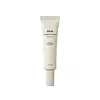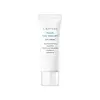What's inside
What's inside
 Key Ingredients
Key Ingredients

 Benefits
Benefits

 Concerns
Concerns

 Ingredients Side-by-side
Ingredients Side-by-side

Water
Skin ConditioningGlycerin
HumectantNiacinamide
SmoothingOctyldodecanol
EmollientCaprylyl Methicone
Skin ConditioningCaprylic/Capric Triglyceride
MaskingPentaerythrityl Tetraethylhexanoate
EmollientPentylene Glycol
Skin ConditioningPolyglyceryl-3 Methylglucose Distearate
EmulsifyingBehenyl Alcohol
EmollientMethylpropanediol
SolventPolymethylsilsesquioxane
1,2-Hexanediol
Skin ConditioningPanthenol
Skin ConditioningMacadamia Integrifolia Seed Oil
Skin ConditioningCetearyl Olivate
Hydroxyethyl Acrylate/Sodium Acryloyldimethyl Taurate Copolymer
Emulsion StabilisingSorbitan Olivate
EmulsifyingGlyceryl Stearate
EmollientMangifera Indica Seed Butter
Skin ConditioningPolyglyceryl-3 Distearate
EmulsifyingCetearyl Alcohol
EmollientAmmonium Acryloyldimethyltaurate/Vp Copolymer
Bis-Diglyceryl Polyacyladipate-2
EmollientStearyl Alcohol
EmollientCaprylyl Glycol
EmollientCetearyl Glucoside
EmulsifyingSqualane
EmollientEthylhexylglycerin
Skin ConditioningDipotassium Glycyrrhizate
HumectantXanthan Gum
EmulsifyingSorbitan Isostearate
EmulsifyingAnastatica Hierochuntica Extract
AstringentAdenosine
Skin ConditioningAllantoin
Skin ConditioningGlyceryl Stearate Citrate
EmollientTrisodium Ethylenediamine Disuccinate
Hydrogenated Lecithin
EmulsifyingLactobacillus Ferment
Skin ConditioningHippophae Rhamnoides Oil
EmollientCeramide NP
Skin ConditioningTocopherol
AntioxidantCollagen Extract
Skin ConditioningSodium Hyaluronate
HumectantBakuchiol
AntimicrobialCaffeine
Skin ConditioningTrehalose
HumectantDipropylene Glycol
HumectantMacadamia Ternifolia Seed Oil
EmollientButylene Glycol
HumectantPolyglyceryl-10 Laurate
Skin ConditioningPhosphatidylcholine
EmulsifyingAsiaticoside
AntioxidantPhytosphingosine
Skin ConditioningAsiatic Acid
Skin ConditioningGlycolipids
Skin ConditioningMadecassic Acid
Skin ConditioningPalmitoyl Tripeptide-5
Skin ConditioningSorbitol
HumectantBifida Ferment Filtrate
Skin ConditioningWater, Glycerin, Niacinamide, Octyldodecanol, Caprylyl Methicone, Caprylic/Capric Triglyceride, Pentaerythrityl Tetraethylhexanoate, Pentylene Glycol, Polyglyceryl-3 Methylglucose Distearate, Behenyl Alcohol, Methylpropanediol, Polymethylsilsesquioxane, 1,2-Hexanediol, Panthenol, Macadamia Integrifolia Seed Oil, Cetearyl Olivate, Hydroxyethyl Acrylate/Sodium Acryloyldimethyl Taurate Copolymer, Sorbitan Olivate, Glyceryl Stearate, Mangifera Indica Seed Butter, Polyglyceryl-3 Distearate, Cetearyl Alcohol, Ammonium Acryloyldimethyltaurate/Vp Copolymer, Bis-Diglyceryl Polyacyladipate-2, Stearyl Alcohol, Caprylyl Glycol, Cetearyl Glucoside, Squalane, Ethylhexylglycerin, Dipotassium Glycyrrhizate, Xanthan Gum, Sorbitan Isostearate, Anastatica Hierochuntica Extract, Adenosine, Allantoin, Glyceryl Stearate Citrate, Trisodium Ethylenediamine Disuccinate, Hydrogenated Lecithin, Lactobacillus Ferment, Hippophae Rhamnoides Oil, Ceramide NP, Tocopherol, Collagen Extract, Sodium Hyaluronate, Bakuchiol, Caffeine, Trehalose, Dipropylene Glycol, Macadamia Ternifolia Seed Oil, Butylene Glycol, Polyglyceryl-10 Laurate, Phosphatidylcholine, Asiaticoside, Phytosphingosine, Asiatic Acid, Glycolipids, Madecassic Acid, Palmitoyl Tripeptide-5, Sorbitol, Bifida Ferment Filtrate
Water
Skin ConditioningDicaprylyl Ether
EmollientPropanediol
SolventGlycerin
HumectantCocos Nucifera Oil
MaskingPolyglyceryl-2 Dipolyhydroxystearate
Skin ConditioningPolyglyceryl-3 Diisostearate
EmulsifyingHydrogenated Ethylhexyl Olivate
EmollientMagnesium Sulfate
Oryza Sativa Bran Wax
Skin ConditioningMagnesium Stearate
Cosmetic ColorantPentylene Glycol
Skin ConditioningPanthenol
Skin ConditioningAllantoin
Skin ConditioningSqualane
EmollientOryza Sativa Bran Oil
EmollientBisabolol
MaskingAdenosine
Skin ConditioningLactobacillus/Soymilk Ferment Filtrate
Skin ConditioningOlea Europaea Fruit Oil
MaskingLavandula Angustifolia Oil
MaskingAnthemis Nobilis Flower Oil
MaskingPolyglyceryl-6 Polyricinoleate
EmulsifyingHydrogenated Olive Oil
Skin ConditioningButyrospermum Parkii Butter
Skin ConditioningHydrogenated Castor Oil
EmollientAluminum Distearate
Emulsion StabilisingSorbitan Caprylate
EmulsifyingOlea Europaea Oil Unsaponifiables
Skin ConditioningTocopherol
AntioxidantPolyglyceryl-5 Polyricinoleate
EmulsifyingMethylpropanediol
SolventEthylhexylglycerin
Skin ConditioningWater, Dicaprylyl Ether, Propanediol, Glycerin, Cocos Nucifera Oil, Polyglyceryl-2 Dipolyhydroxystearate, Polyglyceryl-3 Diisostearate, Hydrogenated Ethylhexyl Olivate, Magnesium Sulfate, Oryza Sativa Bran Wax, Magnesium Stearate, Pentylene Glycol, Panthenol, Allantoin, Squalane, Oryza Sativa Bran Oil, Bisabolol, Adenosine, Lactobacillus/Soymilk Ferment Filtrate, Olea Europaea Fruit Oil, Lavandula Angustifolia Oil, Anthemis Nobilis Flower Oil, Polyglyceryl-6 Polyricinoleate, Hydrogenated Olive Oil, Butyrospermum Parkii Butter, Hydrogenated Castor Oil, Aluminum Distearate, Sorbitan Caprylate, Olea Europaea Oil Unsaponifiables, Tocopherol, Polyglyceryl-5 Polyricinoleate, Methylpropanediol, Ethylhexylglycerin
 Reviews
Reviews

Alternatives
Ingredients Explained
These ingredients are found in both products.
Ingredients higher up in an ingredient list are typically present in a larger amount.
Adenosine is in every living organism. It is one of four components in nucleic acids that helps store our DNA.
Adenosine has many benefits when used. These benefits include hydrating the skin, smoothing skin, and reducing wrinkles. Once applied, adenosine increases collagen production. It also helps with improving firmness and tissue repair.
Studies have found adenosine may also help with wound healing.
In skincare products, Adenosine is usually derived from yeast.
Learn more about AdenosineAllantoin is a soothing ingredient known for its protective and moisturizingg properties. Because of this, it is often added to products with strong active ingredients.
Studies show higher concentrations of this ingredient can promote wound healing.
Though it can be derived from the comfrey plant, allantoin is produced synthetically for cosmetic products to ensure purity.
Learn more about AllantoinEthylhexylglycerin (we can't pronounce this either) is commonly used as a preservative and skin softener. It is derived from glyceryl.
You might see Ethylhexylglycerin often paired with other preservatives such as phenoxyethanol. Ethylhexylglycerin has been found to increase the effectiveness of these other preservatives.
Glycerin is already naturally found in your skin. It helps moisturize and protect your skin.
A study from 2016 found glycerin to be more effective as a humectant than AHAs and hyaluronic acid.
As a humectant, it helps the skin stay hydrated by pulling moisture to your skin. The low molecular weight of glycerin allows it to pull moisture into the deeper layers of your skin.
Hydrated skin improves your skin barrier; Your skin barrier helps protect against irritants and bacteria.
Glycerin has also been found to have antimicrobial and antiviral properties. Due to these properties, glycerin is often used in wound and burn treatments.
In cosmetics, glycerin is usually derived from plants such as soybean or palm. However, it can also be sourced from animals, such as tallow or animal fat.
This ingredient is organic, colorless, odorless, and non-toxic.
Glycerin is the name for this ingredient in American English. British English uses Glycerol/Glycerine.
Learn more about GlycerinMethylpropanediol is a synthetic solvent and humectant.
As a solvent, it helps dissolve other ingredients, helping to evenly distribute ingredients throughout the product. This ingredient has also been shown to have antimicrobial properties which makes it a preservative booster.
Methylpropanediol is able to add a bit of moisture to the skin. It also helps other ingredients be better absorbed into the skin, such as salicylic acid.
Learn more about MethylpropanediolPanthenol is a common ingredient that helps hydrate and soothe the skin. It is found naturally in our skin and hair.
There are two forms of panthenol: D and L.
D-panthenol is also known as dexpanthenol. Most cosmetics use dexpanthenol or a mixture of D and L-panthenol.
Panthenol is famous due to its ability to go deeper into the skin's layers. Using this ingredient has numerous pros (and no cons):
Like hyaluronic acid, panthenol is a humectant. Humectants are able to bind and hold large amounts of water to keep skin hydrated.
This ingredient works well for wound healing. It works by increasing tissue in the wound and helps close open wounds.
Once oxidized, panthenol converts to pantothenic acid. Panthothenic acid is found in all living cells.
This ingredient is also referred to as pro-vitamin B5.
Learn more about PanthenolPentylene glycol is typically used within a product to thicken it. It also adds a smooth, soft, and moisturizing feel to the product. It is naturally found in plants such as sugar beets.
The hydrophilic trait of Pentylene Glycol makes it a humectant. As a humectant, Pentylene Glycol helps draw moisture from the air to your skin. This can help keep your skin hydrated.
This property also makes Pentylene Glycol a great texture enhancer. It can also help thicken or stabilize a product.
Pentylene Glycol also acts as a mild preservative and helps to keep a product microbe-free.
Some people may experience mild eye and skin irritation from Pentylene Glycol. We always recommend speaking with a professional about using this ingredient in your routine.
Pentylene Glycol has a low molecular weight and is part of the 1,2-glycol family.
Learn more about Pentylene GlycolSqualane is an emollient that helps the skin hold onto moisture. It's an oily liquid that occurs naturally in certain types of fish and plant oils.
Because squalane boosts hydration in the skin, it also comes with plenty of benefits: it is an antioxidant and can help fight free radicals and skin damage. Squalane is also found to have a detoxifying effect when applied.
Squalane comes from squalene, which occurs naturally within the sebum of our skin. It is one of the oils our skin produces to keep itself hydrated. Squalane is the hydrogenated version of squalene and has a longer shelf life.
Research shows that squalane is non-irritating (even at 100% concentration).
In general, it's a fantastic ingredient. It does a great job at hydrating the skin, and it's suitable for those with sensitive skin.
The source of squalane may impact malassezia / fungal acne. This is because olive oil derived squalane can contain impurities such as fatty acids and plant waxes. Sugarcane derived squalane is recommended for anyone with malassezia concerns.
Is squalane vegan?
This depends on the source. Squalane can be derived from both plants and animals. Most squalane used in skincare comes from plants.
Please note: the source of squalane is only known if disclosed by the brand. We recommend reaching out to the brand if you have any questions about their squalane.
Read more about squalene with an "e".
Is squalane an oil?
Squalane is often called an oil, but it’s technically not; it’s a hydrocarbon, meaning it’s only made of carbon and hydrogen, unlike true oils which are triglycerides made of fatty acids and glycerol.
The term “oil-free” isn’t regulated, so companies can define it however they want. Some exclude all oils, while others just avoid mineral oil or comedogenic oils.
While some people avoid oils thinking they cause breakouts, the right kind of oil (or oil-like ingredient like squalane) can actually help balance and hydrate your skin. It’s worth testing out simple oils or squalane to see what works best for your skin.
Learn more about SqualaneTocopherol (also known as Vitamin E) is a common antioxidant used to help protect the skin from free-radicals and strengthen the skin barrier. It's also fat soluble - this means our skin is great at absorbing it.
Vitamin E also helps keep your natural skin lipids healthy. Your lipid skin barrier naturally consists of lipids, ceramides, and fatty acids. Vitamin E offers extra protection for your skin’s lipid barrier, keeping your skin healthy and nourished.
Another benefit is a bit of UV protection. Vitamin E helps reduce the damage caused by UVB rays. (It should not replace your sunscreen). Combining it with Vitamin C can decrease sunburned cells and hyperpigmentation after UV exposure.
You might have noticed Vitamin E + C often paired together. This is because it is great at stabilizing Vitamin C. Using the two together helps increase the effectiveness of both ingredients.
There are often claims that Vitamin E can reduce/prevent scarring, but these claims haven't been confirmed by scientific research.
Learn more about TocopherolWater. It's the most common cosmetic ingredient of all. You'll usually see it at the top of ingredient lists, meaning that it makes up the largest part of the product.
So why is it so popular? Water most often acts as a solvent - this means that it helps dissolve other ingredients into the formulation.
You'll also recognize water as that liquid we all need to stay alive. If you see this, drink a glass of water. Stay hydrated!
Learn more about Water